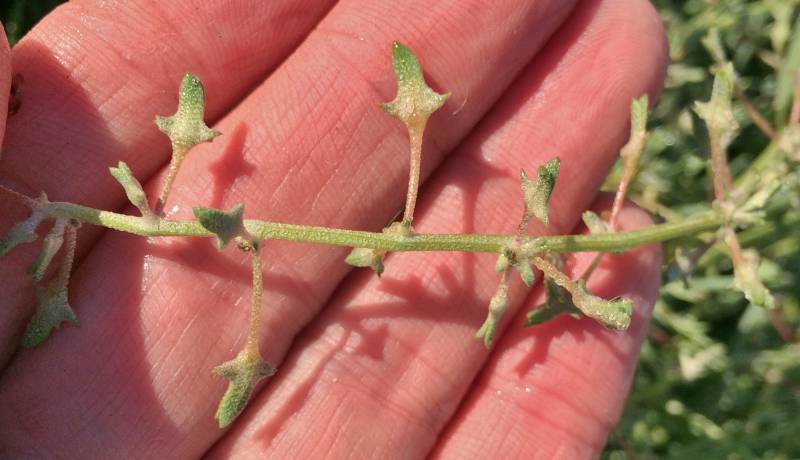Atriplex semibaccata
Atriplex longipes
Australian saltbush, berry saltbush, creeping saltbush
long-stalked orache, Baltic saltbush
Leaves many, alternate, obovate to elliptic, 5-30 mm. long and 2-9 mm. wide, the base tapered, the margins entire to remotely dentate, the tip obtuse.
Staminate flowers in small, terminal, leafy-bracteate clusters 1.5 mm. wide; pistillate flowers solitary or in few-flowered clusters in most leaf axils.
Fruiting bracteoles fleshy and red at maturity, sessile, strongly veined.
Atriplex semibaccata
Atriplex longipes
Occasionally introduced in eastern and central WA; scattered localities primarily in southwestern US.
Occurring west of the Cascades crest in northwestern Washington; southwestern British Columbia to northwestern Washington.



